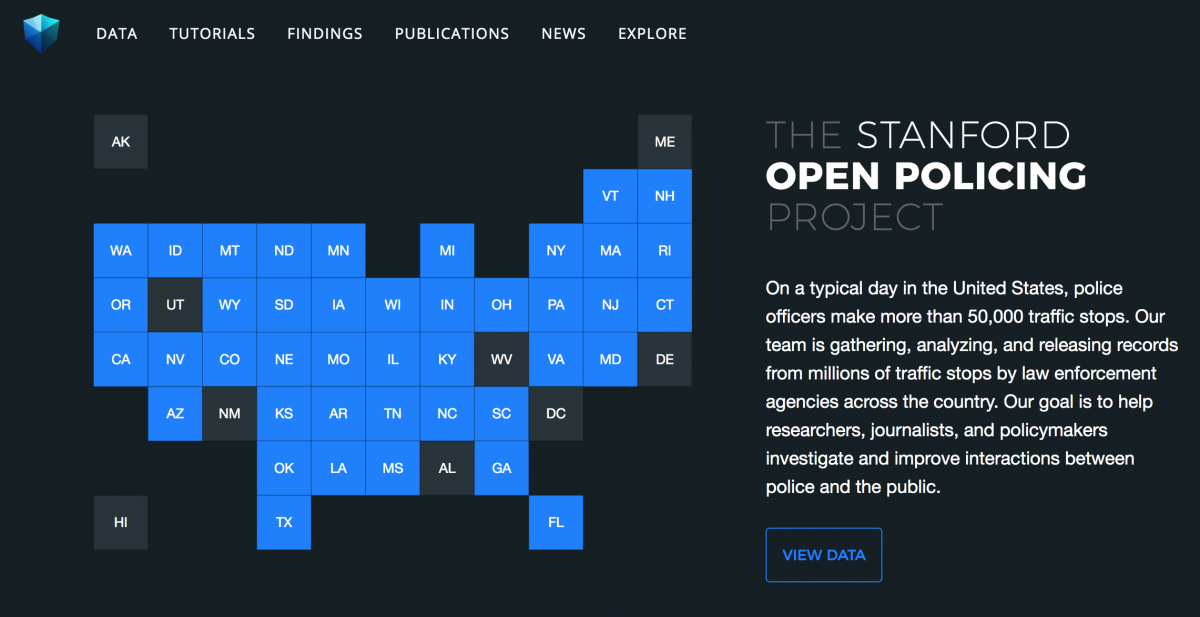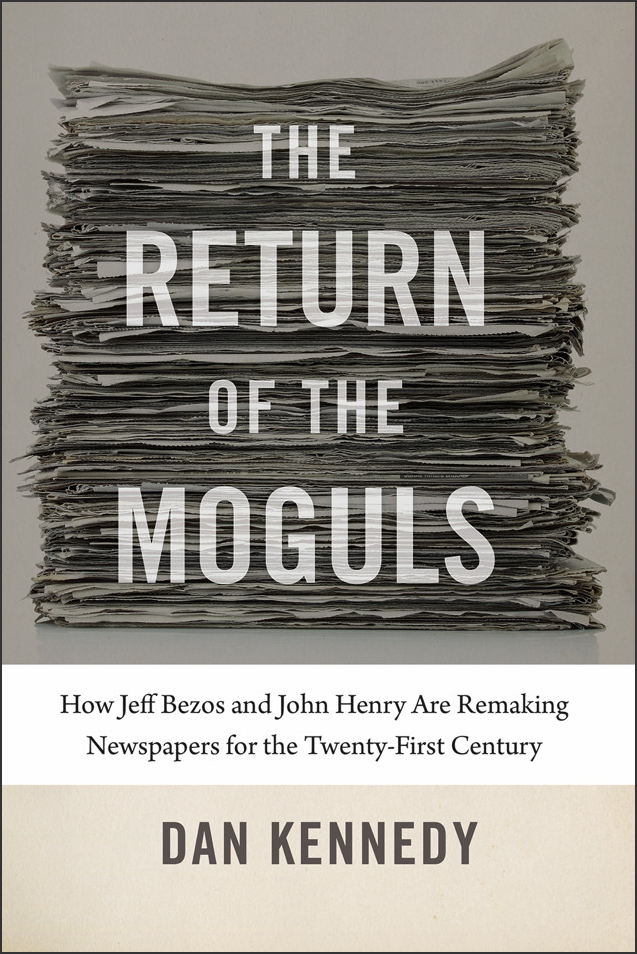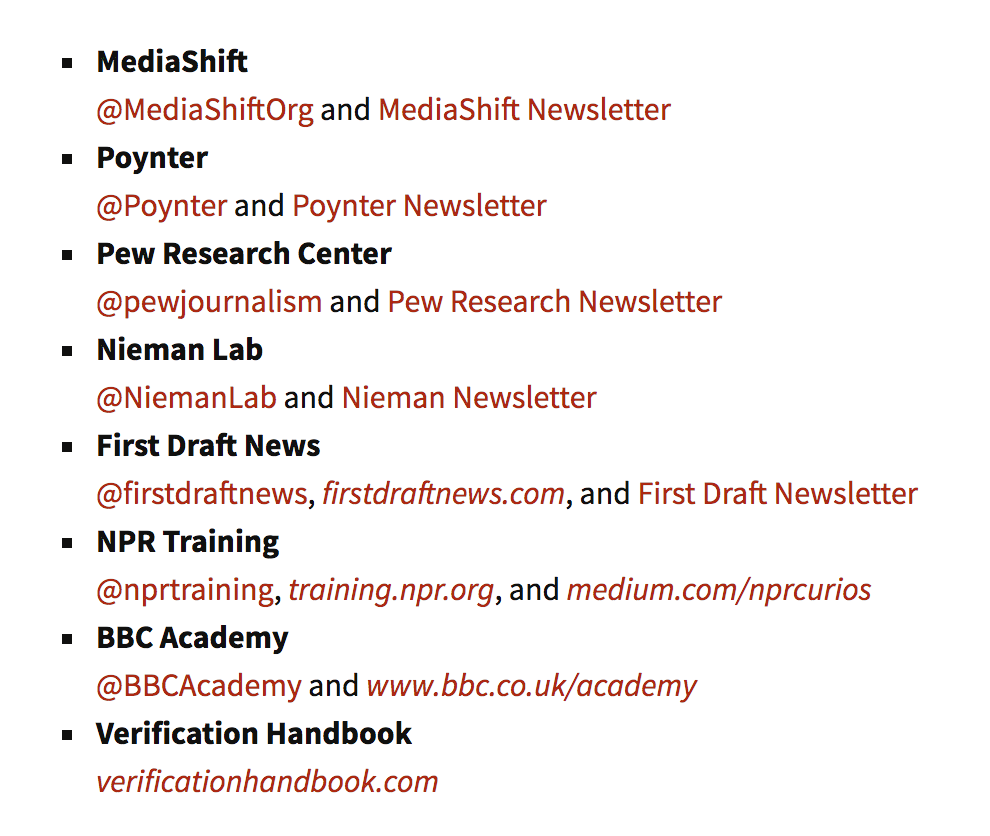Journalism schools need to focus on data, local news, social media and business models. Here are some that are.
It’s no secret that journalism is at a bit of a crossroads. With technology and media consumption habits changing constantly, the industry has been thrust into a state of near perpetual turmoil. Journalists everywhere are figuring out what to take from traditional practices, what to leave behind, and what they need to invent. They must – to quote Brad Pitt in “Moneyball” – adapt or die.
Much of this work, of course, will need to be done by young reporters. Those entering newsrooms now and in the near future will play a huge role in deciding what journalism will become. From that truth, a natural question arises: How should journalism schools prepare these future industry leaders for what lies ahead?
After reading through Nieman Lab’s “Predictions for Journalism in 2019,” we identified four areas of emphasis – data, local news, social media and business models – that will be crucial for journalism students to spend time on. We interviewed five journalism educators across the country who lead especially forward-looking programs and courses within those areas.
Establishing data fluency
With 12 years of data journalism under her belt at The Seattle Times, including a stint as the outlet’s data innovation editor, Cheryl Phillips had done everything from breaking investigative stories to training her colleagues on the potential of data work. But when the opportunity arose to join the journalism faculty at Stanford University, she saw a chance to do even more.
“Their focus was on lowering the cost of accountability journalism and increasing the capability of computational journalism. That’s really what interested me, because I felt like I could have more of an impact trying to innovate [at Stanford] than continuing the work I had been doing,” she said.
Phillips has worked on various projects to enhance data journalism since starting at Stanford in 2014, including serving as a founding member of the Stanford Computational Journalism Lab. But her creation of the Open Policing Project might be the best example of how journalism schools can prepare their students for a data-driven world while also creating real-world results.
Data on police interactions is theoretically available to journalists, but if someone wants to compare data across state and city lines, it can become difficult to deal with all the different agencies and systems in charge of the data – if they’re even collecting it. The Open Policing Project hopes to address that by collecting and cleaning data from across the nation and compiling it into one accessible database.

“You’re always trying to hold officials and organizations accountable, but that can be hard to do when negotiating data becomes difficult,” Phillips said. “If we could make that part easier, we could facilitate more journalism.”
To help accomplish that, Phillips had her students join the mission directly. She tasked her class with assembling and cleaning public records from across the country, essentially serving as the front lines of the Open Policing Project. By the time they finished, they had amassed more than 130 million records for the use of journalists everywhere.
“I think this is a keen example of how journalism can use students for good while also teaching them something,” she said. “The students who learn advanced skills in terms of data work and data collection have a better chance of being hired to do great journalism. Schools are investing in their students and the future of the field.”
Reviving local news
When Tim Franklin left his post as president of the Poynter Institute for a job at Northwestern University’s Medill School of Journalism, how to improve local news was fresh on his mind. After familiarizing himself with the university’s resources, an idea came to him: What if he could address the issue by combining the capabilities of the Spiegel Research Center with the product development of the Knight Lab?
Out of this relationship, the Local News Initiative (LNI) was born. By focusing on digital innovation, the LNI hopes to help revive an industry of immense civic importance. And local news could certainly use the assistance.
“The bottom has fallen out,” Franklin said. “There have been historic reductions in local news staffs across the country. The number of news deserts around the U.S. is truly frightening.”
At the classroom level, the LNI is looping in students to help come up with creative solutions. In one course, “Design for Local News,” teams of design and journalism students work together to prototype new approaches to local journalism. Students start with a user research brief created through LNI grant funding, and the best ideas that arise in the class can be implemented in real local news outlets affiliated with the LNI. Another course in the engineering school brings together data science students to come up with recommendation systems for local news organizations.
Franklin hopes that by focusing students on local news, Northwestern will be able to generate more youth excitement towards the field. “There are definite possibilities for job opportunities for students. Regional outlets are looking for people who can analyze readership trends and audience analytics, so there is an absolute craving for students who have those skills.”
“Regional outlets are looking for people who can analyze readership trends and audience analytics, so there is an absolute craving for students who have those skills.”
He also believes that colleges can help fill the vacuum created by staff and budget cuts. “We are seeing more and more that journalism schools should harness the best traditions of a teaching hospital. They can be story suppliers for local news organizations, [which is] a great way to get experience and get some visibility for their work while also helping the community.”
Who will pay for local journalism?
Here at Northeastern’s School of Journalism, Dan Kennedy has been studying new ways of paying for local journalism by looking at the strategies and realities of nonprofit, for-profit and corporate chain-owned news organizations.
This work has been ten years in the making. In 2013, after four years of visits to the New Haven Independent – a pioneering nonprofit, online-only community website that became the news source of record in that city – Kennedy wrote “The Wired City,” which examined new forms of nonprofit and for-profit digital news projects that were filling some of the gaps created by the decline of legacy newspapers.

He followed that up last year with “The Return of the Moguls,” which looked at how wealthy newspaper owners like Jeff Bezos of The Washington Post and John Henry of The Boston Globe are working to revive their newspapers and perhaps show a path forward for other newspaper owners. One takeaway: papers like the Post and the Globe will need to continue to invest in great reporting while also keeping their platforms state-of-the-art, Kennedy says. “If newspapers are going to make a successful transition from advertiser-supported print products to reader-supported digital platforms, they must continue to invest in news coverage and technology. Customers will not pay more for less.”
Meanwhile, Kennedy sees nonprofit journalism as an increasingly important part of local news. “It solves the key problem facing local newspapers: Who will pay?” he says. “With advertising income continuing to drop and with efforts to extract digital subscription revenues from readers succeeding better in some places than others, foundation leaders and philanthropists who understand how crucial quality news is at the local level are absolutely vital.”
So who’s he watching now? “Earlier this month, The Salt Lake Tribune announced that it would seek to reorganize as a nonprofit — the first large regional newspaper to do so. I’ll be watching that closely.”
The need for new business models
The “Changing Business Models” course at the University of Missouri’s School of Journalism has been around for years. But when Jim Flink, who teaches the graduate-level version of the course, inherited it four years ago he immediately began making changes.
Previously, the course had been built around reading spreadsheets and making sense of quarterly earnings reports. Flink, fresh off of several years as an executive at the start-up Newsy, decided to shake things up.
“I felt like we weren’t serving our students best in that way,” said Flink. “Immediately, I started adapting the curriculum to talk about things like workflow, product life cycles, adaptability, and brick-and-mortarless operations.”
Traditionally, there has been a divide between the business side of a newsroom and the reporters. Flink’s course hopes to help bridge that divide. “It’s about silo busting,” he said. “Any good media organization is doing that these days, and there needs to be an understanding of what works, what doesn’t, and why it’s important.”
“It’s about silo busting. Any good media organization is doing that these days.”
Some of the most innovative business models these days are coming from smaller, less prestigious digital organizations, a point that Flink emphasizes strongly. “Civil is a great example of innovation, [being] based on blockchain technology and good journalism,” he said. “Traditional organizations have been a little slower to change, so you can’t only look at them.”
Looking ahead, Flink is optimistic but believes that the business of journalism will need constant reevaluation. “There’s never been a better time to be a journalist. But to survive today, you have to be adaptive and efficient. Are you operating as if your lives depend on it?”
That question will need to be posed to young journalists and professors alike. “It is very difficult to remain in academia and stay current,” Flink said. “You have to be exposed to what’s really happening. Academia has to be immersing students in real-world scenarios, then extracting from that back into the classroom, and it has to be imbued in start-up culture.”
Understanding the power of social media
Love it or hate it, social media has become a fundamental aspect of modern journalism. Nearly every reporter has a Twitter presence these days, and publications are pouring more and more resources into their social teams. And yet, the industry has struggled to figure out its true value. With new platforms falling in and out of popularity, it has proven difficult to instill industry-standard practices.
These challenges are very familiar to Anthony Adornato, professor of the “Mobile and Social Media Journalism” course at Ithaca College and author of a textbook of the same name. That’s why he uses his class as a laboratory of sorts, with students trying out promising platforms and technologies in almost real time. “This is a space where if something new comes out, we take it to the classroom and try it out. You have to be willing to do that sort of testing,” he said.
Now a required course for journalism students, Adornato started the course in 2014 with a clear mission: Prepare students for what they would face in professional newsrooms. “The use of mobile and social media tools for gathering info, distributing stories, and engaging with audiences, that’s just what multimedia journalism is now,” he explained.

Given how uncertain the social media world is, Adornato stresses a careful monitoring of the landscape, rather than a full dedication to any one tool. “A lot of [the class] is looking at audience’s news consumption habits. We need to figure out what they’re doing now, and take that info and turn it into lessons for the course.”
Adornato also emphasizes that social media should be taught as more than a storytelling tool. “In general, journalists haven’t always done a great job at being transparent. Social media can be leveraged to show the audience what it takes to get the job done. Building that relationship with social media can lead to more trust and more connection,” he said.
And, especially pertinent in this age of fake news, Adornato teaches students how to vet user-generated content. After all, with deepfakes and other creative forgeries popping up all the time, social media is already proving to be a minefield for reporters.
Ultimately, Adornato hopes that social media knowledge becomes a core tenet of journalism curriculums. Past students have already told him how useful the course is, based on their application of its content in newsrooms.
“They point to it as one [class] that stands out because it’s really how journalism is being done now,” he said. “There’s all sorts of opportunities out there, and these students already have the experience to handle them.”
Photo: Mimi Thian via Unsplash.






Nonprofit journalism organizations are a possible solution in metropolitan areas, but less than 10% of US daily newspapers are in metropolitan areas and that may well be true about weekly newspapers. In my state of Pennsylvania, there are roughly 60 dailies. Nonprofits are feasible in Philadelphia and Pittsburgh, but what about the rest of the state? Is Dan Kennedy studying any newspapers other than metro dailies?